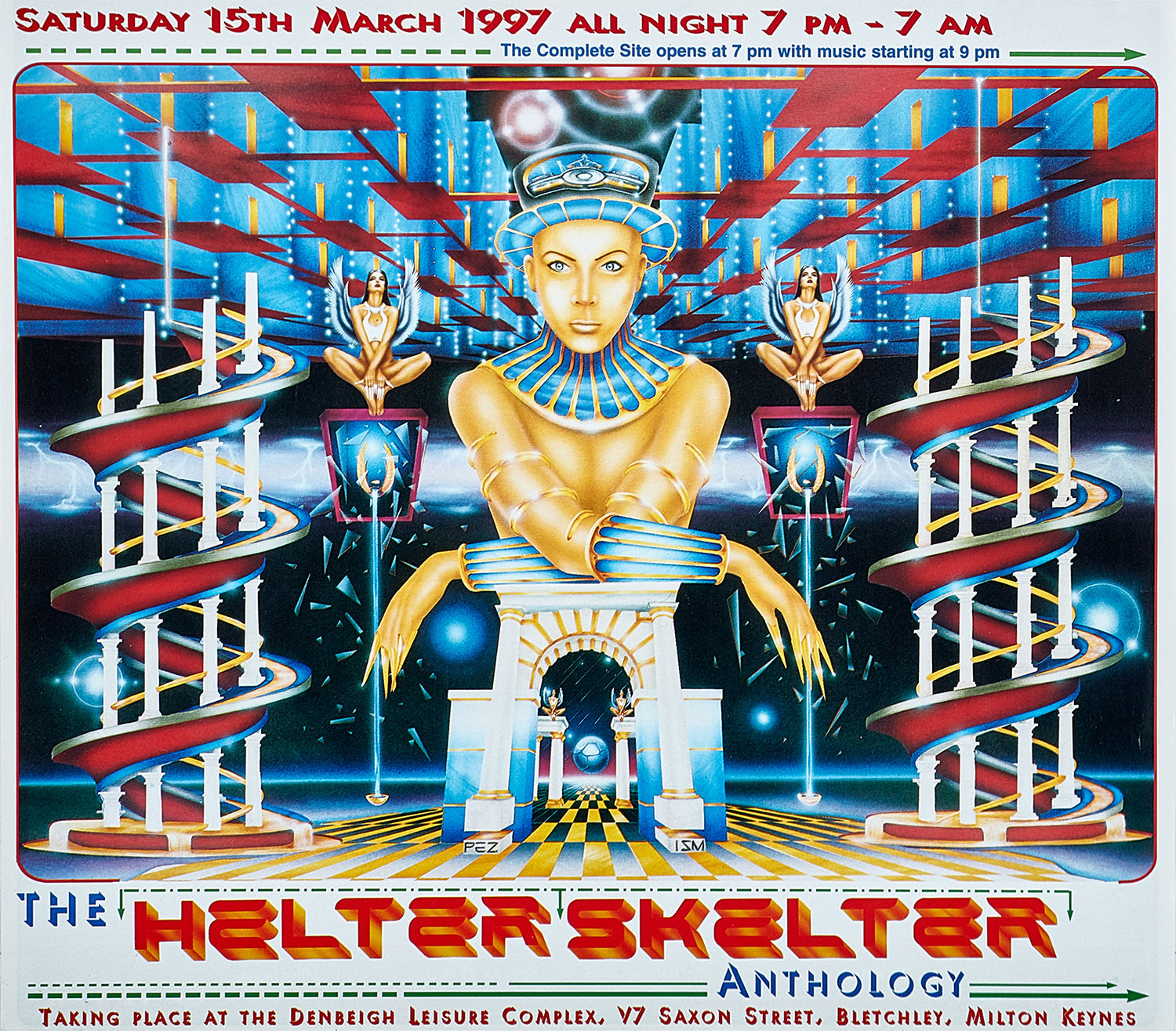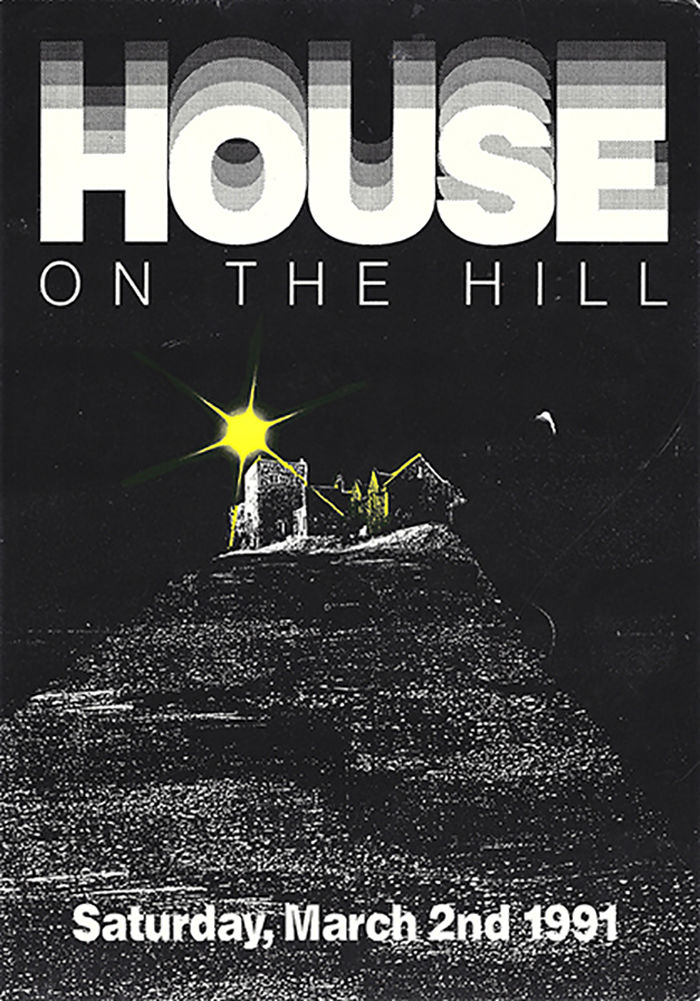Explore the graphic design behind 1990s rave culture
Rob Ford is fast becoming graphic design’s principle archivist.
It was recently that we were stunned by his Taschen release Web Design: The Evolution of the Digital World 1990-Today, a detailed visual archive of classic websites dating back to the very inception of the internet.
Just when you think lightning couldn’t strike twice, though, Rob reveals yet another hidden history to design, this time with a dazzling Instagram page devoted to the flyers and memorabilia of the ’90s UK rave scene.

R A V E (@rave_a2z) is the name of the profile, and FWA founder Rob is the man uploading pristine-looking bits from his collection which press how the visual was as important as the musical during this pivotal moment in dance music history. Without decent-looking flyers, how packed out would raves have turned out, and how would the aesthetics of music and alternative culture look today? Rob answers this question and more for Digital Arts.
How much is in your collection, and where’s it all from?
I have around 5,000-10,000 flyers from 1988 onwards. I’ve been collecting for years but ramped things up in the last 12 months after chatting with my great friend Julius Widemann, Taschen senior editor, whom I have done four Taschen books with. I’m hoping to create an XL book with him on this very subject.
I’ve been fortunate to be in touch with many from back in the day, including some promoters and people close to the scene and have bought up some entire flyer and memorabilia collections from people heavily involved in the scene. It’s actually like treasure hunting and a huge buzz doing a deal on a flyer collection as you never really know what you are going to find.

I have spent the past six months cataloguing everything I have and filing all flyers, membership cards etc. in plastic sleeves to safeguard them for the future. My plan is to cherry pick the best content to showcase in the RAVE book.
Tell us about your visual faves from the rave days.
This design for ESP’s Dreamscape 1 would become iconic in the rave world. The main face image became the subject of many conversations as to who it was and remains a mystery other than it was the front cover of Omega Science Digest magazine in 1984.

The classic Marmite rip for Sterns in 1992 shows how many famous brands inspired rave flyers.

Dave Little’s flyer design for Spectrum has to be one of the most unforgettable of the entire era.

Danny Rampling’s pioneering Shoom parties gave us a glimpse of the love that also went into the imagery of the era.

There must be a lot of unsung design heroes from this era! Have you tried to find any, and what was their influence? I see echoes in the music artwork today of Robert Beatty, Keith Rankin, Bráulio Amado etc.
Oh yes, absolutely. The likes of Pez and Junior Tomlin became famous for their flyer designs and who I’ll be showcasing in my upcoming book as well. Their flyer designs, and many others, grabbed the attention of people like me who’d travel to their local record shop to hear the latest tracks and collect flyers for upcoming raves; mine was Soul Sense in Luton. However, at the time we were collecting the flyers to know where to go, not to keep for the future. We were never collectors as such in those days.

Of course, a lot of rave flyer designs ripped off famous artists, like Salvador Dali and Boris Vallejo. Sterns ripped the design of Holsten Pils and became one of the first to nearly get sued for encroaching on intellectual property. Much like the early web, the rave scene was like the Wild West: totally lawless. And the best bit? No smartphones. Proper hands in the air stuff, not iPhones in the air.

I personally know many from this era who have gone on to head up creative teams at many of the top tech brands, including Google. At a time when the web was also experiencing a Wild West scenario of innovation and creativity, I often wonder if the rave era helped push the internet to where it is today.
What made you fall in love with these rave gems?
The imagery, flyers etc that mark that generation hold a very special place in my heart. The natural high that is nostalgia is more powerful than ever nowadays and lockdown leaves us all remembering some good times in our lives.
In the late 1980s, Rave was a movement that started with the music and became almost a religious experience for me and an entire generation. Most of us had never experienced bonding on such a mass scale. It was like being part of something huge, monumental even. None of us had ever experienced being around so many strangers who had an outpouring of friendship (love, even).It absolutely had nothing to do with politics, for me anyway, it was purely a new experience unlike any before that exploded in the late 80s and early 90s. Anyone who was lucky enough to have experienced those early days felt a part of something historical, even revolutionary.

I used to go to Chelsea football games home and away in the 80s and would be in the middle of the infamous Shed at Stamford Bridge. Crowd violence seemed to disappear once the rave scene took off. The first rave I went to was in September 1991, Amnesia House at Donnington Park.
My friends and I travelled ‘up north’ which was always seen as a risk for away football matches but I was blown away, immediately, by the new culture of friendship and being part of something. Suddenly, a Northern accent was a friend. We also lucked out as The Prodigy was a Live PA.

The first 15 seconds of this rare HD footage from Amnesia House Donnington Park in 1991 captures the unique vibes of those times, with Carl Cox mixing on decks resting on a couple of concrete blocks.
My life changed that night: a door was opened in my mind that I didn’t know existed and I became the creative person I still am today.
Where were U in ’92? I mean, were you designing anything yourself during this era?
I used to make mix tapes for my friends. I’d listen to pirate radio and the likes of Steve Jackson on Kiss FM and pause/record/pause etc on my dad’s tape deck. I’d then cut up flyers of the time for cassette visuals, some of which would be worth a lot of money now if I hadn’t cut them up.
Has the page brought back many memories and old connections for you?
100% yes! A club called Sterns, ‘The House on the Hill’, was as close to a place of worship I was ever going to get. It looked like a country mansion as you approached it but inside it was four floors of music where everyone knew the score. It was both famous and infamous.

I first visited Sterns in October 1991 and danced so much that I could barely walk for a week afterwards. There was always talk about the police and local council wanting to close Sterns and this made the place feel even more authentic and special. It was like being part of an exclusive cult.
For me, Sterns opened a door to life that I didn’t know existed and I will always be indebted to the In-Ter-Dance family that made that even possible. I also felt privileged to have met promoter Mensa (R.I.P.) at Peace Fest 92 rave, an In-Ter-Dance event. When Sterns closed in 1993 it immortalised Sterns and with the sad death of Mensa, he became immortalised in the world of rave as well.

By chance I was in touch with a guy who used to be an MC there who was selling an entire collection of master recordings, plus a complete flyer collection for Sterns itself. For me, it was like buying original Beatles recordings and imagery from the Cavern Club.
I’ve also been in touch with a lot of other rave and venue promoters in my research for the RAVE book, which has led to me talking to a lot of DJs whom I spent years listening to. This experience has been as close to being star-struck as I’m ever likely to get.

Follow over at @rave_a2z and DM Rob if you have anything to share on this subject.
Related: Rob Ford’s Web Design, a deep dive into the websites that made us
https://www.digitalartsonline.co.uk/features/graphic-design/explore-graphic-design-behind-1990s-rave-culture/